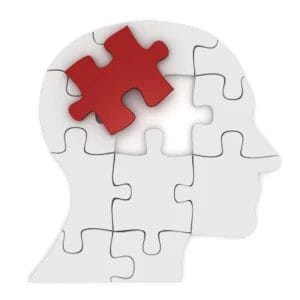Did you know there are 10 more primary headache diagnoses outside the categories of migraine, tension and trigeminal autonomic cephalalgia? While these are lesser known, they have diagnostic significance. Understanding your diagnosis can help you target your treatment. Some require excluding other causes before making the diagnosis. This blog will sort through what sets these apart.
1. New Daily Persistent Headache (NDPH):
 This headache has features of migraine, tension headache, or a mix of both. It begins on a specific day (clearly memorable) and doesn’t go away. It is continuous and unremitting within 24 hours and lasts more than 3 months. This occurs in patients who have no history of a headache disorder and is not better explained by another diagnosis (such as hemicrania continua or a secondary cause).
This headache has features of migraine, tension headache, or a mix of both. It begins on a specific day (clearly memorable) and doesn’t go away. It is continuous and unremitting within 24 hours and lasts more than 3 months. This occurs in patients who have no history of a headache disorder and is not better explained by another diagnosis (such as hemicrania continua or a secondary cause).
2. Primary Stabbing Headache:
Often described as ice pick or “jabs and jolts” pain. The stabbing pain is random and can occur infrequently or many times per day. The pain is severe, lasts only seconds, and the location is often random, moving from one area to another. It is commonly located toward the front of the head. While it may coexist with other types of primary headache disorders (e.g. migraine, cluster), it also sometimes accompanies headaches from a secondary cause (such as giant cell arteritis or intracranial hypertension).
3. Thunderclap Headache:
Reaches severe intensity in under a minute and lasts longer than 5 minutes. This type of headache needs to be evaluated for aneurysm, spasm of arteries in the brain, and other emergency situations.
4. Cold Stimulus Headache:
Also known as “ice cream headache” or “brain freeze”. This is brought on when a cold stimulus is applied externally to the head, ingested, or inhaled. When the stimulus is external to the head, the headache resolves within 30 minutes. This might be seen in cold weather or during cryotherapy. With an ingested or inhaled stimulus, the headache resolves within 10 minutes. It commonly occurs in people with migraine, in which case the pain may shift to one side of the head. In others, it may be frontal, temporal or bilateral.
5. External pressure headaches:
Can be a result of compression or traction. External compression could be due to a helmet, headband, tight hat, or goggles. External traction headache is otherwise known as a ponytail headache and is also caused by hair extensions.
6. Nummular Headache:
Is a round or elliptical small area (1-6 cm) that varies in pain intensity and is located on the scalp. The condition is chronic in 75% of cases and the location is fixed.
7. Hypnic Headache:
Often wakes a person up around the same time every night and lasts 15 min to 4 hours. Although it is called “alarm clock” headache, it is more related to the phase of sleep than the time of night, and can also awaken people from a nap. The headaches occur more than 10 days a month for more than 3 months. There are no cranial autonomic symptoms or restlessness. The rain ranges from mild to severe, and more commonly occurs in patients over the age of 50.
The last three types of headache disorders can be primary but underlying causes also include Chiari I malformation, aneurysm, cardiac cephalalgia, and spinal CS leak (intracranial hypotension):
8. Primary Cough Headache:
Lasts 1 second to 2 hours with a benign cough. The pain reaches peak intensity within seconds and subsides over a few minutes, but some patients have a mild-moderate headache for up to 2 hours.
9. Primary Exercise Headache:
Brought on only during and after strenuous physical exercise. It occurs more often in hot weather and high altitude.
10. Primary Headache Associated with Sexual Activity:
Typically starts as a bilateral ache and intensifies as excitement increases, with the severity becoming intense at orgasm.
As with all primary headache diagnoses, it’s important to rule out other causes. With all headache diagnoses, it is possible to experience more than one type of headache. Some types of headaches are experienced only in a specific situation. Noticing this situation and learning to adjust for it can help reduce attacks. However, successfully avoiding the attacks by modifying activities doesn’t exclude a serious underlying cause and the need for other diagnostic testing (remember, these headache types are not better described by another ICHD-3 diagnosis by definition).
If a person who experiences migraine also experiences one of these other primary headache diagnoses, they are more likely to have migraine features with it than a person who does not have migraine.
Tell us!
Have you been diagnosed with one of these primary headache diagnoses? Have you found treatments that work for you? What questions do you have for your doctor after reading this information?
References:
https://ichd-3.org/
Note: Thanks to Deborah Friedman, MD, one of our medical advisors, for proofing this article.